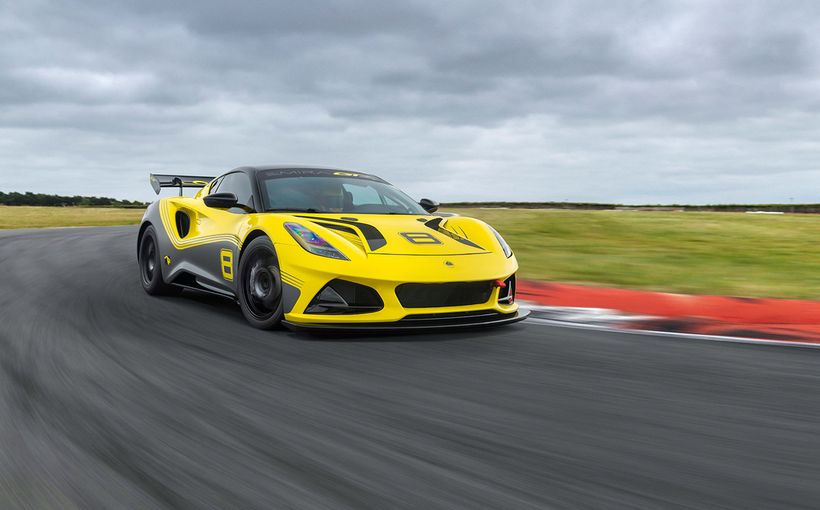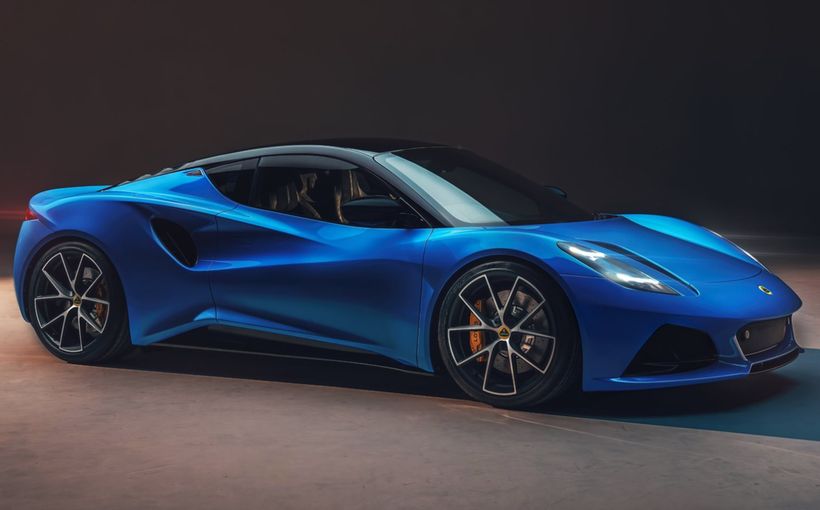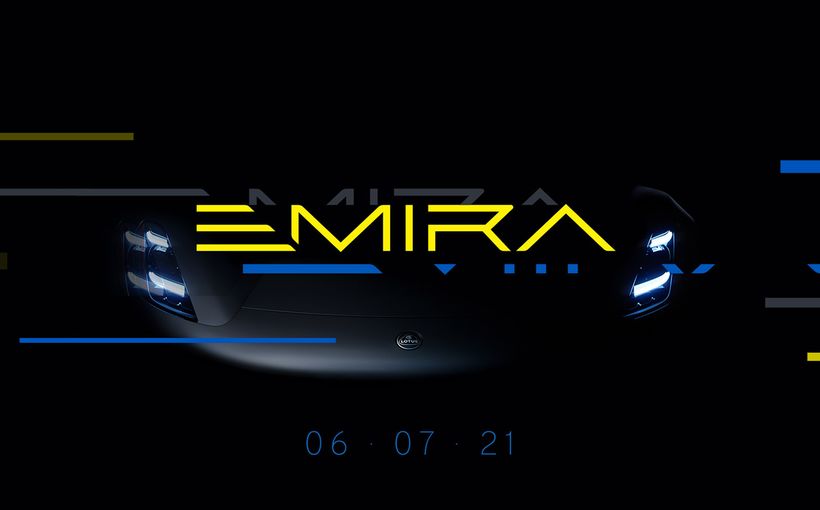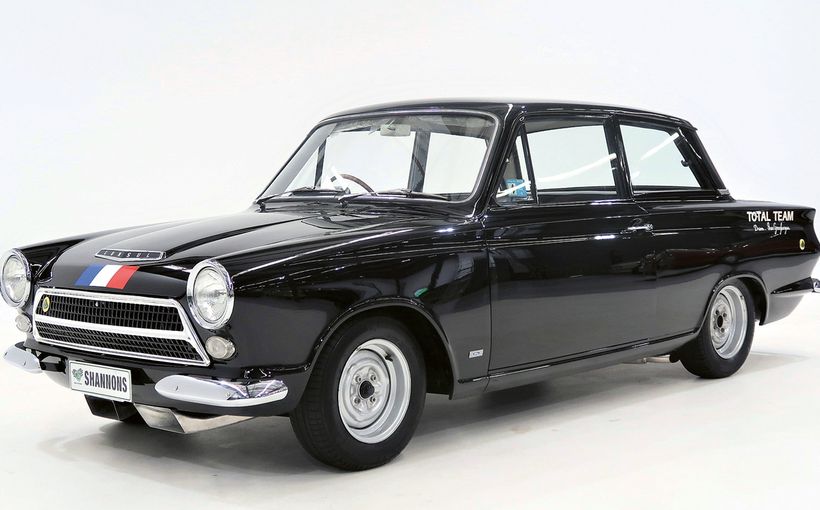
It was not until the early 1960s that Britain had really recovered from the ravages of World War Two and the ensuing long years of austerity, so it is no coincidence that the first quarter of the Swinging Sixties constituted the heyday of the traditional British sports car, what automotive historian Michael Sedgwick has called ‘her favourite sector’.
In those years the term ‘sports car’ still implied the presence of a fabric roof, generally fussy to erect and something less than 100 per cent weather-proof – a more accurate and definitive descriptor is ‘roadster’. Nineteen sixty-one gave the world the almost incredible Jaguar E-Type and the Triumph TR4, while the following year saw the debut of the MGB, Triumph Spitfire and the subject of this feature, the Lotus Elan.
While all four evoke great nostalgia, it is Colin Chapman’s creation that at once most evokes the ideals of the British roadster while seeming the most remote from anything available brand new these six decades later. As I write, the Toyota Yaris GR Rallye is being hailed as the latest seriously compelling hot hatch; among its many credentials is the very low kerb weight of 1250kg. That is, unbelievably, almost double the weight of the Lotus Elan.

(Image: https//en.wheelsage.org/)
In its road test of the Elan, Road & Track (December 1963) commented that having two adults aboard for the running of performance figures had a dramatic effect on the power to weight ratio. The specifications panel shows the kerb weight as 1500lb (680kg) and test weight as 1890lb (857kg). In late 1963 as the US prepared itself for the muscle car era, any car that could run the standing quarter-mile in 16.9 seconds belonged in the seriously quick category; imagine the time with just the driver on board – perhaps 15.9!
Arguably, what the hot Yaris is to today’s market, the Elan was to the world of 1963 in terms of performance and packaging. The combination of a thoroughgoing race-bred engine in a fibreglass body mounted on an immensely strong welded steel backbone frame (forked at both ends) was inevitably a winning formula.
In a Road & Track story entitled ‘The Allure of the Lotus Elan’ (2015), Peter Egan wrote:
The first time I drove a Lotus Elan, everything else I'd ever driven felt like a truck. And I mean real truck, as in Army deuce-and-a-half.
The Elan was light and small, but not demeaningly small or ‘cute.’ It was just right, roomy on the inside yet compact and sleek on the outside. It instantly made you wonder why so many other sports cars were so large and heavy—what were they trying to accomplish that the Elan couldn't do? Support a larger engine? (Which, in turn, required a heavier car?) Here we had reductionist thinking of the finest, leanest kind.
On a less positive note, Egan noted the unreliability of early Elans. A friend owned one:
The steering and handling were wonderful, but we soon noticed that every time we drove the Elan hard—or just drove it at all—something went wrong. Nothing big or unrepairable, just annoying stuff. Once, the car stopped dead and we smelled fuel in the trunk. A rubber fuel line had sheared where it passed through a hole in the fibreglass bodywork.
The car was available in kit form and it’s probable that many of these customers finished up with a better car! Lotus did make steady improvements to the Elan and the S2 (Series 2), introduced in 1964, was built to a higher standard; just 850 examples of the (retrospectively named) S1 came to market.

(Image: https//en.wheelsage.org/)
The Elan was always produced in small numbers and was never aimed at what might be thought of as the popular sports car market where MG, Triumph and Austin Healey predominated. Even at the time of the Elan’s announcement on 26 May 1962, Colin Chapman was famous for his ability to create very light, very fast cars, mostly conceived with the racetrack in mind.

(Image: https//en.wheelsage.org/)
In 1951 Chapman built his first car intended for a customer and made his name through the 1950s with a series of space-frame kit cars designed as roadgoing racers.
In 1957 Lotus introduced the gorgeous Elite coupe, an upmarket specialist machine with a Coventry Climax engine. The Elite combined monocoque construction with a fibreglass body. But it has been said more recently that this car was aimed 60 per cent at motorsport and 40 per cent at the public road. By contrast, the Elan was intended to sell in greater volumes and to fund Chapman’s racing endeavours; he started the Lotus Formula One team in 1958 and two years earlier was a works driver for Vanwall, although he never started a race.

(Image: https//en.wheelsage.org/)
Michael Sedgwick wrote that the Elan ‘set new standards in handling.’ Indeed, it’s difficult to imagine a standard E-Type keeping company with one on a tight circuit; unlike the Jaguar, the Elan had a relatively wide track front and rear. Consider, too, its braking: did any other car in the world of 1962 combine such light weight with disc brakes all round? Accelerate, brake, handle: the Elan was brilliant at all three!
In the US context of 1963, 105 brake horsepower was puny and even in the UK it would have been unimpressive of itself, especially with Jaguar boasting a significantly overstated 265 for its E-Type. Colin Chapman may well have considered the formidable new Jaguar when setting his pricing for the Elan because he positioned it almost halfway between the dearest of the three new mainstream sports cars (TR4, MGB, Spitfire) – the TR4 – and the E-Type.
The tiny Lotus offered most of the performance – top speed and acceleration beyond about 80 miles per hour aside – of the E-Type in a vehicle roughly midway between the Austin Healey Sprite/ MG Midget and the MGB in dimensions. So it constituted a new and unique proposition in the world of British roadsters.

(Image: https//en.wheelsage.org/)
The MGB gave 94 horsepower in a car that was only slightly bigger than the Lotus but weighed some 50 per cent more. Road & Track quoted 1500lb but Matthew Vale in his Lotus Elan: the Complete Story has a figure of 1410 (640kg) and there were minor differences in the US specification. (Interestingly, Automobile Year 1962-63 uses the phrase ‘weight 1280lb approx’ – this figure might have been supplied by Chapman, adding even more of his famed lightness!) By contrast, the MGB hits the scales at 2320lb (1052kg), which was still quite respectably light for 1962.
It was just 12 feet nine inches (3890mm) in length and four feet eleven in width (1500), compared with the Elan’s respective numbers of 12 feet one inch (3680) and four feet eight (1420). At just 43 inches in height, the Elan sat six inches lower!
As for the Midget, it was six inches shorter and three inches narrower than the Elan (though taller) but still weighed more (1556/706).
Even more telling is the comparison of the Elan with the Triumph TR4. Like its predecessors, the TR4 was a harder-edged machine than its MG rival – faster, rougher-riding, less civilised. With 105 brake horsepower, its engine had exactly the same output as the Elan’s, while its physical dimensions closely paralleled its new and deadly rival from Abingdon.
British pricing in 1962 from least expensive to dearest was: Midget £613, Spitfire £730, MGB £834, TR4 £1032 and Elan £1499. The Jaguar E-Type cost about £2000.

(Image: https//en.wheelsage.org/)
Excellent and desirable as the Elite had been, it was the Elan that marked the serious beginning of Lotus as a manufacturer and Chapman’s creative genius was on full display. He knew that if he were to succeed in developing a sports car that could be competitively priced, he needed a much cheaper engine than the Coventry Climax.
At the start I spoke about Britain only finally emerging from the doldrums of the war years at the start of the 1960s and, to a considerable extent, this was also the case when it came to automotive engineering.
Arguably, when it came to engine design, Ford of Britain led the way among the mass manufacturers,. Slow-revving, long-stroke units which were the consequence of the Royal Automobile Club’s (RAC) formula for calculating horsepower for tax purposes, remained quite common through the 1950s. Ford’s 109E (later ‘Kent’) unit, first seen in the 105E Anglia of 1959, had its roots in a new product planning department established in 1953, the aim of which was to produce simple but effective engineering solutions that would facilitate economic manufacture. As it would turn out, the Ford approach was almost the polar opposite of the approach taken by the British Motor Corporation during the Alec Issigonis era. The 105E Anglia and the BMC Mini were both 1959 debutantes.

The new Anglia engine benefited from Ford’s American experience with thin-walled iron castings. It was radically oversquare with a bore of 3.1875 inches and a stroke of 1.906 inches for a capacity of 997cc and a then respectable maximum power output of 39 brake horsepower.
The engine used a traditional cast-iron head on a cast-iron block which was lighter than most mass-produced engines of the day. Initially, the crankshaft ran in three main bearings which was common practice for smaller-capacity four-cylinder engines; even the 1.8-litre MGB had a three-bearing configuration until 1965!

(Image: https//en.wheelsage.org/)
Colin Chapman first took notice of the new oversquare and comparatively light Ford unit when it was enlarged to 1340cc for the oddball 1961 Ford Consul Classic 315 and Consul Capri 335 non-identical twins – when the Cortina made its debut the following year it, too, was briefly a ‘Consul’, namely the Ford Consul Cortina. Chapman began discussions with Ford and soon learnt that there were plans afoot to increase capacity to 1.5 litres.
This version was to have five main bearings and was still markedly oversquare despite an increase in stroke to 2.86 inches. Interestingly, the use of an external chain drive to the single camshaft meant that there was the possibility of an overhead camshaft conversion and Colin Chapman discerned his opportunity. The robust bottom-end of the engine was perfect for racing and high-performance road applications.

(Image: https//en.wheelsage.org/)
He already knew Ford’s marketing boss Walter Hayes. When Hayes was editor of the Sunday Despatch newspaper, he had invited Chapman to contribute a motoring column. Hayes joined Ford in January 1962 and his first big job was to manage the marketing of the imminent Cortina.

(Image: https//en.wheelsage.org/)
At the same time, Ford was initiating its international Total Performance strategy and a high-performance variant of the new Cortina was on the agenda.
Chapman got his engine as a stating point for a new car and Hayes awarded him a contract to develop the machine that initially came to market as the Ford Cortina Lotus. The Elan was the first to receive the twin-cam engine, months ahead of the very special Cortina.

(Image: https//en.wheelsage.org/)
The 116E 1498cc five main bearings unit was announced in May 1962 and Lotus quickly acquired a block and crank and created its twin cam conversion.
Former Coventry Climax chief designer Harry Mundy (who later masterminded Jaguar’s V12 engine) designed a twin overhead camshaft cylinder head to bolt onto the Ford block. This new head was very wide to exploit the latest combustion chamber technology and its prominence in any engine bay provided graphic advertising of the Lotus brand.
The first engine went into Jim Clark’s Lotus 23 for the Nürburgring 1000km race run on 26 May. Clark crashed after 12 laps while in the lead, having been gassed by leaking exhaust fumes, but the engine had showcased its credentials.
Two more were soon built, one of which went into an Anglia. A fourth was inserted into the Elan prototype to be shown at Earls Court in October. The Lotus Cortina was by then in advanced planning.

(Image: https//en.wheelsage.org/)
Interestingly, only five or so 1498cc engines were fitted to production Elans. By November, Ford engineers had learnt to select 116E blocks with walls thick enough to withstand being bored out to 1558cc.
Demand for this special engine soon outstripped supply with plenty going into homologation Lotus Cortinas. The car was introduced to the press in Monte Carlo on 21 January 1963 and appeared publicly at the January 1963 London Racing Car Show: one wonders whether Sir William Lyons and his colleagues saw the writing on the wall for its ageing Mark 2 3.8 as the all-conquering sedan racer! At any rate, there were now two new Lotus models available for public consumption and there was a wait for the engines to propel them!
To meet increasing demand, Colin Chapman launched the 26R (opening image) to suit racers. About 100 were produced across S1 and S2 from 1964. A lighter body which used less fibreglass, slightly flared arches and an engine highly tuned by BRM or Cosworth to give 140 horsepower were highlights. Weight was down to 1278lb (580kg).
The S2 was designated Type 26 and was still available only as a roadster. It incorporated numerous refinements and can be distinguished by its different taillights. An S/E (Special Equipment) edition was introduced in January 1966 with 10 extra horsepower (115), knock-on wire wheels, carpets(!), a brake servo, inertia-reel belts and a higher final drive.

(Image: https//en.wheelsage.org/)
September 1965 brought a new Fixed Head Coupé variant (Type 36).
In June 1966 the S3 went on sale. It boasted a new ‘wrap-over’ boot lid and Vauxhall rear lights. Then in November 1967 Lotus announced the Elan SS (Super Safety), which was engineered to meet US safety legislation in the Ralph Nader (Unsafe at Any Speed, 1965) era. This one acquired a collapsible steering column, rocker switches to replace protruding toggles and instruments recessed further into the dash.
The S4 appeared in March 1968 with a slightly restyled body incorporating mildly flared arches and wider wheels. Because this one incorporated the necessary safety upgrades, the SS model became redundant. There was an improved folding top.
Bigger news was the Sprint introduced in October 1970. New engineering director Tony Rudd masterminded an engine upgrade known as The Big Valve Twin Cam. The alloy cam cover was ribbed. Beneath lay larger inlet valves, high-lift camshafts and the compression ratio was up from 9.5: 1 to 10.3. Peak power climbed to 126 brake horsepower at 6500rpm.

(Image: https//en.wheelsage.org/)
The bigger Elan Plus 2 of 1967 was in the same idiom as the E-Type 2 + 2. Colin Chapman insisted the Plus 2 be equipped with chrome bumpers because he had never liked the fibreglass ones on the ‘baby’ Elan. Perhaps unconsciously channelling Alec Issigonis who did the same thing with his Morris Minor, he insisted the body be widened an inch at the time until he thought the proportions were right. The production car was 14 feet one inch (4293mm) long, five feet six inches (1676) wide and three feet 11 inches (1194) high. In the interests of aerodynamics (0.32 coefficient of drag) at least as much as aesthetics, the Plus got a cut-off Kamm tail, highly fashionable in the second half of the 1960s.
The Plus 2 evolved over its six years in production, generally becoming more civilised. The standout variant is John Player Special Edition Plus 2S 130 of 1973. Its black and gold livery matched the Formula One cars, John Player being Lotus’ major sponsor.

(Image: https//en.wheelsage.org/)
The original Lotus company barely survived its founder, who died of a heart attack in 1982. By October 1986 General Motors had acquired a 91 per cent stake. Under this new ownership, a new-generation Elan was developed. The 1989 M100 was a front-wheel-drive, steel-bodied, Isuzu-powered two-seater. The body was designed by Peter Stevens who was also the architect of the McLaren F1 supercar. Perhaps the highlight of the new-gen Elan was the M200 Speedster concept car displayed at the Frankfurt Motor Show in September 1991. This beauty had separate windscreens for driver and passenger, a restyled nose and an aerodynamic rollover bar.

(Image: https//en.wheelsage.org/
GM discontinued the Elan in 1992. It soon sold Lotus to Bugatti who produced a further 800. After various corporate machinations, Kia ended up with the rights and produced 792 Elans between 1996 and 2000. The Elan ended as poet T.S. Eliot says the world does, ‘not with a bang but a whimper.’
While there is no doubt the M100 Elan was among the best-handling front-drivers in the world, it must be seen as a colossal anti-climax after the original, producing just 25 brake horsepower more than the 1962 car but weighing 50 per cent more. How many Super Models offer inferior performance in their 1990s guise than the original?
I am not sure I entirely agree with Michael Sedgwick who claimed that the traditional British roadster was an anachronism before the 1960s were out (by which time, he noted, Datsun had shown the way of the sports car future with its 240Z). The original ‘baby’ Elan was still highly covetable when production ceased in 1973. Its ultra-light weight and superb dynamics meant it was still a driver’s delight and doubtless many of the sports car world’s cognoscenti would rather drive a Plus 2 than a 240Z!








